Pre-20th Century British History Quiz
1. Which of these groups were not Anglo-Saxon?
A. Saxons
B. Angels
C. Normans
D. Jutes
2. What is the correct order of invasions of England after the unknown ‘first Britons’ settled?
A. Romans, Celts, Vikings, Anglo-Saxons, Normans
B. Celts, Romans, Anglo-Saxons, Vikings, Normans
C. Celts, Romans, Vikings, Anglo-Saxons, Normans
D. Romans, Celts, Vikings, Normans, Anglo-Saxons
3. What year was the Charter of Liberties signed?
A. 1100
B. 1215
C. 1678
D. 1755
4. What Monarch signed the Charter of Liberties?
A. William the Conqueror
B. Queen Elizabeth
C. King Henry I
D. George II
5. What year was the Magna Carta signed?
A. 1215
B. 1325
C. 1415
D. 1101
6. What Monarch was forced to Sign the Magna Carta?
A. King Henry VIII
B. Queen Victoria
C. King John
D. King James I
7. King Henry VIII was the second monarch of the house of:
A. Stuart
B. Romanov
C. York
D. Tudor
8. Who was the 5th and last monarch of the house Tudor?
A. Henry VIII
B. Elizabeth I
C. James I
D. Queen Victoria
9. James I was a member of the __ house and made king in __:
A. Tudor; 1307
B. Stuart; 1603
C. Hanover; 1789
D. York; 1434
10. The Spanish Armada was largely destroyed by bad weather in:
A. 1588
B. 1699
C. 1730
D. 1428
:::Answers:::
Pre-20th Century British History Quiz
1. Which of these groups were not Anglo-Saxon?
A. Saxons
B. Angels
C. Normans
D. Jutes
2. What is the correct order of invasions of England after the unknown ‘first Britons’ settled?
A. Romans, Celts, Vikings, Anglo-Saxons, Normans
B. Celts, Romans, Anglo-Saxons, Vikings, Normans
C. Celts, Romans, Vikings, Anglo-Saxons, Normans
D. Romans, Celts, Vikings, Normans, Anglo-Saxons
3. What year was the Charter of Liberties signed?
A. 1100
B. 1215
C. 1678
D. 1755
4. What Monarch signed the Charter of Liberties?
A. William the Conqueror
B. Queen Elizabeth
C. King Henry I
D. George II
5. What year was the Magna Carta signed?
A. 1215
B. 1325
C. 1415
D. 1101
6. What Monarch was forced to Sign the Magna Carta?
A. King Henry VIII
B. Queen Victoria
C. King John
D. King James I
7. King Henry VIII was the second monarch of the house of:
A. Stuart
B. Romanov
C. York
D. Tudor
8. Who was the 5th and last monarch of the house Tudor?
A. Henry VIII
B. Elizabeth I
C. James I
D. Queen Victoria
9. James I was a member of the __ house and made king in __:
A. Tudor; 1307
B. Stuart; 1603
C. Hanover; 1789
D. York; 1434
10. The Spanish Armada was largely destroyed by bad weather in:
A. 1588
B. 1699
C. 1730
D. 1428
Friday, July 22, 2011
Thursday, July 21, 2011
City Profile 013: Seattle, Washington, United States Of America
CITY PROFILE 013: SEATTLE, WASHINGTON, UNITED STATES OF AMERICA
Coordinates: 47°36′35″N 122°19′59″W
Elevation: 0–158 m (0–520 ft)
Daily Mean Temp: 51.75 Fahrenheit (10.975 Celcius)
Metro Population: 3,407,848
Estimated 2050 Metro Population: ?
Risks: Tsunamis, earthquakes.
Advantages: Generally mild climate, abundant water, abundant natural resources, peaceful region of the world.
Resources: Immediate: Port Regional: Gold, timber, fish, berries, dairy products, abundant water
Other: Beautiful city, trend setting city.

Coordinates: 47°36′35″N 122°19′59″W
Elevation: 0–158 m (0–520 ft)
Daily Mean Temp: 51.75 Fahrenheit (10.975 Celcius)
Metro Population: 3,407,848
Estimated 2050 Metro Population: ?
Risks: Tsunamis, earthquakes.
Advantages: Generally mild climate, abundant water, abundant natural resources, peaceful region of the world.
Resources: Immediate: Port Regional: Gold, timber, fish, berries, dairy products, abundant water
Other: Beautiful city, trend setting city.

Wednesday, July 20, 2011
History Quiz 001
(Created by Caleb Golston)
Events Of The Past 2000 Years Quiz
Events Of The Past 2000 Years Quiz
1. Catherine the Great becomes Empress of Russia
2. Charlemagne becomes king
3. British East India Company founded
4. Dutch East India Company founded
5. Ivan the Terrible’s reign ends
6. Great Northern War (Sweden vs. Russia) ends
7. Gutenberg first shows his printing press
8. Haley’s Comet comes closest ever; possibly depicted/written about around globe
9. Great Lisbon, Portugal Earthquake
10. Dutch Tulip Crash
A. 1755
B. 837
C. 1600
D. 1584
E. 1444
F. 1637
G. 1762
H. 1602
I. 800
J. 1721
:::ANSWERS:::
:::ANSWERS:::
Events Of The Past 2000 Years Quiz
1. Catherine the Great becomes Empress of Russia G 1762
2. Charlemagne becomes king I (800)
3. British East India Company founded C (1600)
4. Dutch East India Company founded H (1602)
5. Ivan the Terrible’s reign ends D (1584)
6. Great Northern War (Sweden vs. Russia) ends J (1721)
7. Gutenberg first shows his printing press E (1444)
8. Haley’s Comet comes closest ever; possibly depicted/written about around globe B (837)
9. Great Lisbon, Portugal Earthquake A (1755)
10. Dutch Tulip Crash F 1637
A. 1755
B. 837
C. 1600
D. 1584
E. 1444
F. 1637
G. 1762
H. 1602
I. 800
J. 1721
Tuesday, July 19, 2011
The Druids
The Druids were an Iron age pagan priestly class in the Celtic sphere of influence. Like many things ancient, little is known about the Druids, however, they have been the subject of art, books, revivals and speculation as much as any ancient group in ancient non-Mediterranean Europe. They were a class exempt from taxation and military service and had the ability to stop battles from taking place.
Did the Druids participate in human sacrifice? It is likely, however, there is not evidence to prove it. Although the Druids thrived in Ireland, England, Gaul and other parts of Western Europe, by the 2nd century AD, like so many things Celtic, only the British Isles remained as a haven for the culture. Many people say the Druids built Stonehenge, though this is not a fact. Druids possibly acted as soothsayers or as doctors. Healing rituals were likely used in conjunction with medical procedures.
It is also possible that the 'snakes' St. Patrick was alleged to have driven from Ireland had more to do with the symbolic connection of the serpent to the Druids. This would have been around 400 AD when Druidism would have been on the decline, maybe even in Ireland (usually the last region to lose various Celtic elements.)
Today, there are many people in the western world who consider themselves Druids or at least incorporate Druid rituals (though these practices are mostly guesses to what ancient Druids actually did) into a greater belief system or lifestyle.
Did the Druids participate in human sacrifice? It is likely, however, there is not evidence to prove it. Although the Druids thrived in Ireland, England, Gaul and other parts of Western Europe, by the 2nd century AD, like so many things Celtic, only the British Isles remained as a haven for the culture. Many people say the Druids built Stonehenge, though this is not a fact. Druids possibly acted as soothsayers or as doctors. Healing rituals were likely used in conjunction with medical procedures.
It is also possible that the 'snakes' St. Patrick was alleged to have driven from Ireland had more to do with the symbolic connection of the serpent to the Druids. This would have been around 400 AD when Druidism would have been on the decline, maybe even in Ireland (usually the last region to lose various Celtic elements.)
Today, there are many people in the western world who consider themselves Druids or at least incorporate Druid rituals (though these practices are mostly guesses to what ancient Druids actually did) into a greater belief system or lifestyle.
Friday, July 15, 2011
Slow Month
I am beggining to feel the pinch many people feel during the summer. The readership of this blog is way down from the past couple of months. I can see why television shows bolt for the summer and come back in the fall. I have heard radio show hosts also mention that they have less listeners during the summer. All in all, I am going to keep it going but am taking note of how slow it has been.
Thursday, July 14, 2011
City Profile 012: Monte Carlo
CITY PROFILE 012: MONTE CARLO
Coordinates: 43°44′23″N 7°25′38″E
Elevation: Near sea level
Daily Mean Temp: 59.5 Fahrenheit (15.3 Celsius)
Metro Population: 15,200
Estimated 2050 Metro Population: Similar (due to lack of room to expand)
Risks: Earthquakes.
Advantages: Cool weather, beautiful, wealthy, not under great threat of invasion.
Resources: Immediate: Port. Regional: Tourism, world power centre, finance, casinos, sport.
Other: This is a world power centre. Monte Carlo is a place where the world elite feel at home and among their own.

Photo: Hampus Cullin, 4 August 2006
Coordinates: 43°44′23″N 7°25′38″E
Elevation: Near sea level
Daily Mean Temp: 59.5 Fahrenheit (15.3 Celsius)
Metro Population: 15,200
Estimated 2050 Metro Population: Similar (due to lack of room to expand)
Risks: Earthquakes.
Advantages: Cool weather, beautiful, wealthy, not under great threat of invasion.
Resources: Immediate: Port. Regional: Tourism, world power centre, finance, casinos, sport.
Other: This is a world power centre. Monte Carlo is a place where the world elite feel at home and among their own.

Photo: Hampus Cullin, 4 August 2006
Wednesday, July 13, 2011
Mr. Geography
Mohammad Saaed Collins is a Toronto cab driver also known as 'Mr. Geography'. Several years ago I happened to see him on Conan O'Brien Show (which I rarely watch). You can ask him just about anything reasonable about geography and he will know the answer. Here is a link to a facebook page dedicated to him:
http://www.facebook.com/group.php?gid=26924763993
http://www.facebook.com/group.php?gid=26924763993
Tuesday, July 12, 2011
Follow and message me on Twitter
I would really like to interact with some other Geography fanatics on twitter. Talk to me at Twitter.com/CalebGolston. If you want to follow me, be sure and mention to me that you are doing so for geography as I also use the twitter for my music production friends.
Hope to start some conversations soon!
Caleb
http://twitter.com/calebgolston
Hope to start some conversations soon!
Caleb
http://twitter.com/calebgolston
Friday, July 8, 2011
Denmark
Denmark is not a country many people think is very exciting. I am very interested in Scandanavian though, its history, geography, archaeology and culture. Denmark has a milder climate than Norway or Sweden and also has flatter land. The capital is Copenhagen and there are 5.5 million people in Denmark. The countryside is low stress with lots of farms.
One of the great features of Denmark is its western coastline. Unlike many coastlines which do not face the ocean directly (due to other landmasses breaking the waves, bays, sounds, ect) it features large waves coming in and out like the famous coasts of California or Australia. Denmark is a peaceful country with a high standard of living. While its landscape doesn't feature canyons, mountains, deserts, cliffs or other extreme features, it is green and calm. The ocean meets the Jutland Peninsula and quitely land becomes sea. A few large islands in Eastern Denmark are highly populous as well.
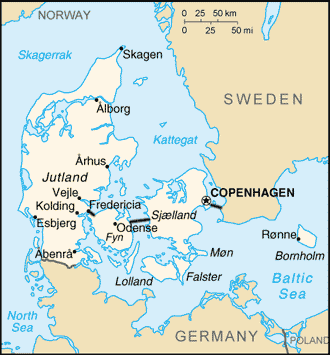

Copenhagen


Øresund Bridge
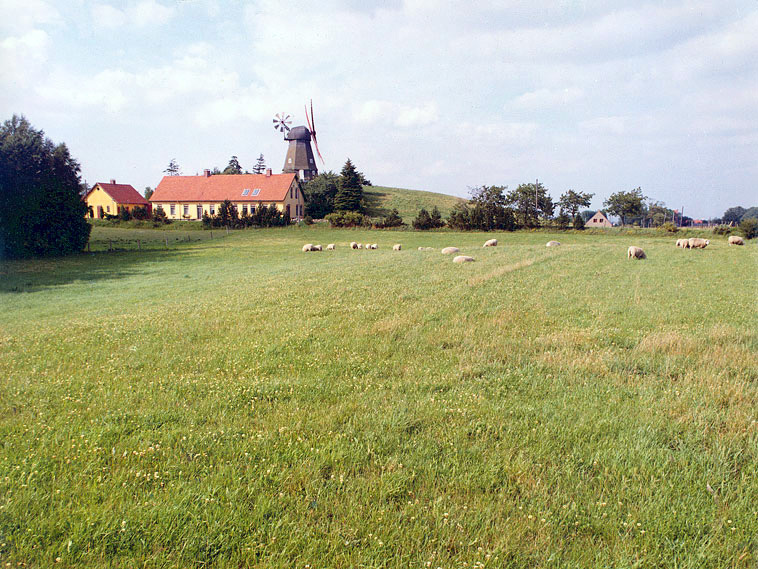
Karlebo, Sjælland, Denmark 2005. Photo: JM Rice.

Sandy cliff beach at the North Sea, Vendsyssel, Denmark, 2004. Photo: Tomasz Sienicki

Rebild National Park in Denmark. Photo: Frank Vincentz
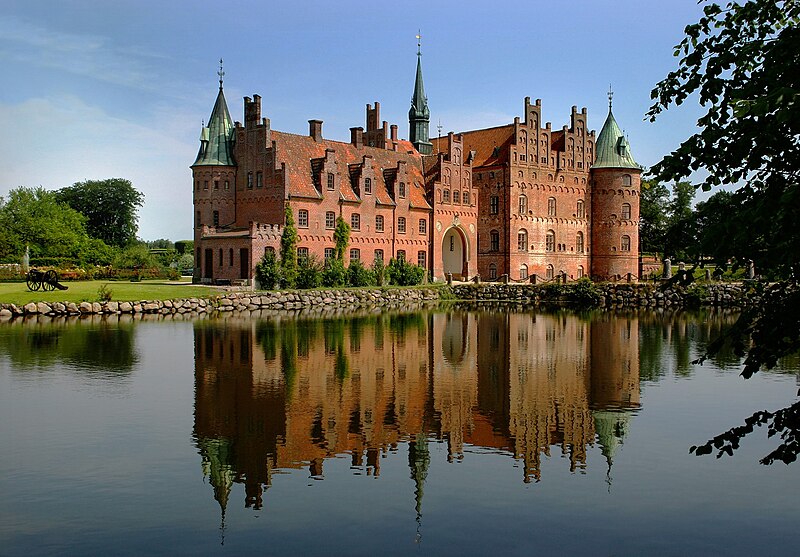
Egeskov Castle Photo: Malene Thyssen

Frederiksberg Have, 2006 Photo: Jacob Bøtter

Thy Nationalpark, Denmark. Photo: Jens Buurgaard Nielsen

View over part of the Thy Nationalpark (Denmark) at Hanstholm vildtreservat and Tved klitplantage, 2007. Photo: Jens Nielsen.

Nationalpark Mols Bjerge Photo: Nico
One of the great features of Denmark is its western coastline. Unlike many coastlines which do not face the ocean directly (due to other landmasses breaking the waves, bays, sounds, ect) it features large waves coming in and out like the famous coasts of California or Australia. Denmark is a peaceful country with a high standard of living. While its landscape doesn't feature canyons, mountains, deserts, cliffs or other extreme features, it is green and calm. The ocean meets the Jutland Peninsula and quitely land becomes sea. A few large islands in Eastern Denmark are highly populous as well.


Copenhagen


Øresund Bridge

Karlebo, Sjælland, Denmark 2005. Photo: JM Rice.

Sandy cliff beach at the North Sea, Vendsyssel, Denmark, 2004. Photo: Tomasz Sienicki

Rebild National Park in Denmark. Photo: Frank Vincentz

Egeskov Castle Photo: Malene Thyssen

Frederiksberg Have, 2006 Photo: Jacob Bøtter

Thy Nationalpark, Denmark. Photo: Jens Buurgaard Nielsen

View over part of the Thy Nationalpark (Denmark) at Hanstholm vildtreservat and Tved klitplantage, 2007. Photo: Jens Nielsen.

Nationalpark Mols Bjerge Photo: Nico
Thursday, July 7, 2011
City Profile 011: Gold Coast, Queensland, Australia
CITY PROFILE 011: GOLD COAST, QUEENSLAND, AUSTRALIA
Coordinates: 28°00′22″S 153°25′46″E
Elevation: Sea level
Daily Mean Temp: 70.1 Fahrenheit (21.15 Celsius)
Metro Population: 591,473
Estimated 2026 Metro Population: 730,000
Risks: Floods, hot weather.
Advantages: Coastal, scenery, wealthy city, historically safe region of the world, located in one of the wealthiest countries.
Resources: Immediate: Port. Regional: coal, gold, sand, magnesium, bauxite, aluminium, lead, silver, zinc.
Other: Regional film capital, tourist destination.

Coordinates: 28°00′22″S 153°25′46″E
Elevation: Sea level
Daily Mean Temp: 70.1 Fahrenheit (21.15 Celsius)
Metro Population: 591,473
Estimated 2026 Metro Population: 730,000
Risks: Floods, hot weather.
Advantages: Coastal, scenery, wealthy city, historically safe region of the world, located in one of the wealthiest countries.
Resources: Immediate: Port. Regional: coal, gold, sand, magnesium, bauxite, aluminium, lead, silver, zinc.
Other: Regional film capital, tourist destination.

Wednesday, July 6, 2011
McDonald Observatory
Recently, my dad told me about a co-worker of his who was retiring to West Texas in a special community for sky watchers. The surrounding Chihuahuan desert isn't a bad setting either for those interested in desert landscapes. He had sent a link to some pictures of the area and I was somewhat surprised by how drawn I was to the idea. It looked ideal. I have been to the Chihuahuan Desert a few times, once in the Villa Ahumada, Mexico area. It was the most deserted and quite place I have ever been too. On either side of the highway was miles and miles of untouched (virtually obviously) land.
Though the wealthy and modern, yet isolated and wild community was located in a nice setting, the real reason it was in the desert was because of this:

The above map is a map of the earth at night (obviously it is a collection of images taken at different times since it isn't night everywhere at the same time). The map highlights light pollution of major cities. In fact, it is amazing how clearly you can major cities represented as dots of light similar to dots on a map. Look, you can see Dallas really well, Houston well, Tokyo, Perth, Durban barely, Stockholm, Oslo, Anchorage, I can even see Fairbanks easily.
Now, located near my fathers-coworkers west Texas community, in the same desert, is the McDonald Observatory.

Hobby-Eberly Telescope. It houses one of the largest optical telescopes in the world.

Harlan J. Smith Telescope preparing for observations.
The Observatory has 4 telescopes, the largest, Hobby-Eberly Telescope and the much smaller Harlan J. Smith Telescope, Otto Struve Telescope and a large format imaging telescope. The observatory opened in 1939 with the building of the Otto Struve Telescope, at the time had the second largest telescope in the world. Eventually control went to The University of Texas. Today, visitors come and see the telescopes which to this day scan the stars.
I can't help but think about the ancient people who also scanned the stars and that connection we have to our ancestors (whether it be Mayan, Babylonian, Chinese or Viking, ect). The Maya located far but in the same larger region as West Texas built observatories too:

Chichén Itzá Mayan observatory built about 900 AD (1000 years prior to the McDonald Observatory), 2005. Photo: Bruno Girin
We will always be interested in the universe and in the stars within it. West Texas is a great place to do it, as is anywhere on earth, so long as we turn the lights out sometimes to be able to see.
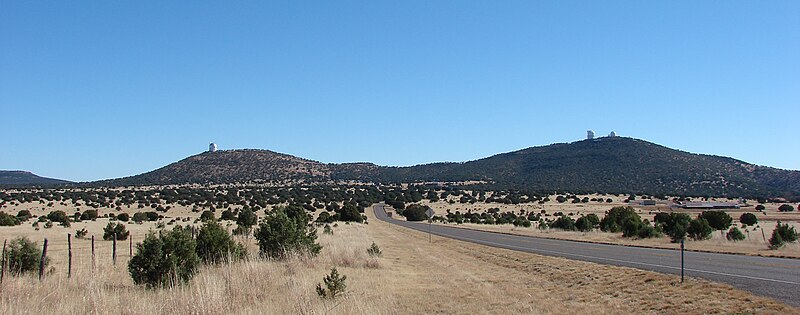
A view of McDonald Observatory from highway TX-118, 2008. Photo: Jason Quinn.

Ocotillo and other Chihuahuan Desert plants with the Chisos Mountains in background, Big Bend, Texas 2006. Photo: Leaflet
Though the wealthy and modern, yet isolated and wild community was located in a nice setting, the real reason it was in the desert was because of this:

The above map is a map of the earth at night (obviously it is a collection of images taken at different times since it isn't night everywhere at the same time). The map highlights light pollution of major cities. In fact, it is amazing how clearly you can major cities represented as dots of light similar to dots on a map. Look, you can see Dallas really well, Houston well, Tokyo, Perth, Durban barely, Stockholm, Oslo, Anchorage, I can even see Fairbanks easily.
Now, located near my fathers-coworkers west Texas community, in the same desert, is the McDonald Observatory.

Hobby-Eberly Telescope. It houses one of the largest optical telescopes in the world.

Harlan J. Smith Telescope preparing for observations.
The Observatory has 4 telescopes, the largest, Hobby-Eberly Telescope and the much smaller Harlan J. Smith Telescope, Otto Struve Telescope and a large format imaging telescope. The observatory opened in 1939 with the building of the Otto Struve Telescope, at the time had the second largest telescope in the world. Eventually control went to The University of Texas. Today, visitors come and see the telescopes which to this day scan the stars.
I can't help but think about the ancient people who also scanned the stars and that connection we have to our ancestors (whether it be Mayan, Babylonian, Chinese or Viking, ect). The Maya located far but in the same larger region as West Texas built observatories too:

Chichén Itzá Mayan observatory built about 900 AD (1000 years prior to the McDonald Observatory), 2005. Photo: Bruno Girin
We will always be interested in the universe and in the stars within it. West Texas is a great place to do it, as is anywhere on earth, so long as we turn the lights out sometimes to be able to see.

A view of McDonald Observatory from highway TX-118, 2008. Photo: Jason Quinn.

Ocotillo and other Chihuahuan Desert plants with the Chisos Mountains in background, Big Bend, Texas 2006. Photo: Leaflet
Tuesday, July 5, 2011
Russia
After a week off from posting (call it a holiday) I am filing this one on Russia!
The topic of Russia is vast. The history, archaeology and geography each could be a blog. Russia is easily the largest country in the world by land area. It is the 9th largest in population behind Nigeria and ahead of Japan. Much of the land is harsh--but it is beautiful. The capital and largest city is Moscow (Москва). Saint Petersburg (Санкт-Петербург) Novosibirsk (Новосибирск), Yekaterinburg (Екатеринбург) and Nizhny Novgorod (Нижний Новгород) round out the top 5 cities in Russia.Within Russia is 1/4th of the worlds fresh water, 100,000 rivers and the worlds largest timber reserves. Also, Russia has the second most total renewable water resources after Brasil.
Russia is a powerhouse in intellectual fields such as mathematics, science and strategy games (like chess). Russians are also a growing power in the music production field (which I am involved in). Some notable people from these fields include Grigori Perelman, Yakov Eliashberg, Nikolai Efimov, Albert Shiryaev and Garry Kasparov.
At different points in history, Russia has been considered a 'super-power'. Now, few would say it is. However, this could (and I think will) change soon. If the West continues its mindless direction, the future is Asia's and Russia is included in this. Russia is rich in oil and natural gas, a sure sign of strength. Rail transportation in Russia is dominated by Russian Railways, a monopoly which employs 950,000 people. The economy continues to improve for Russians.
Russia's physical geography is immense. Within Russia are many mountain ranges, lakes, rivers, deserts and tundra, taiga and almost every type of landscape. The land can be bleak but this makes it interesting. Cities are found all across Russia. From the northern most natural border with the artic to the eastern most natural border with the vast bering sea. Many parts of Russia get as cold as anywhere on the planet. The continental climate of much of Siberia means it also can get hot, sometimes, 99 degrees. I am definatly going to write more on Russia in the future.
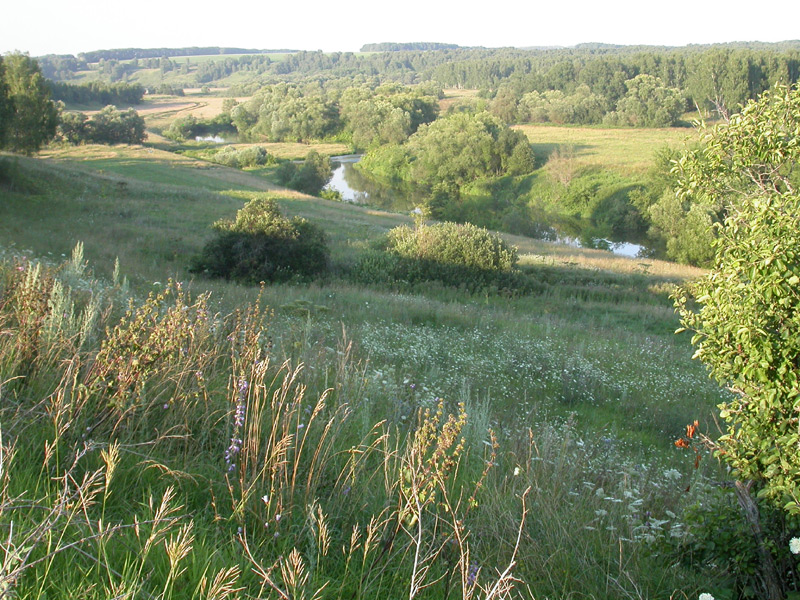
Osyotr river (Осётр река)
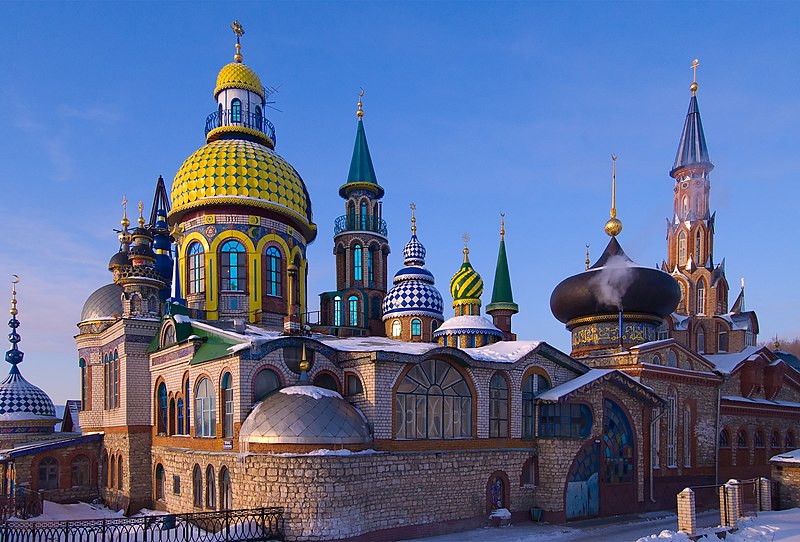
All Religions Temple. A building and cultural center build by the local artist Ildar Xanov. Photo and description: Maarten

Peterhof, St. Petersburg

Outskirts of Serpeevka village. Cleyabinsk region, Russia. Окрестности деревни Серпеевка. Челябинская область, Россия. Photo: Скампецкий
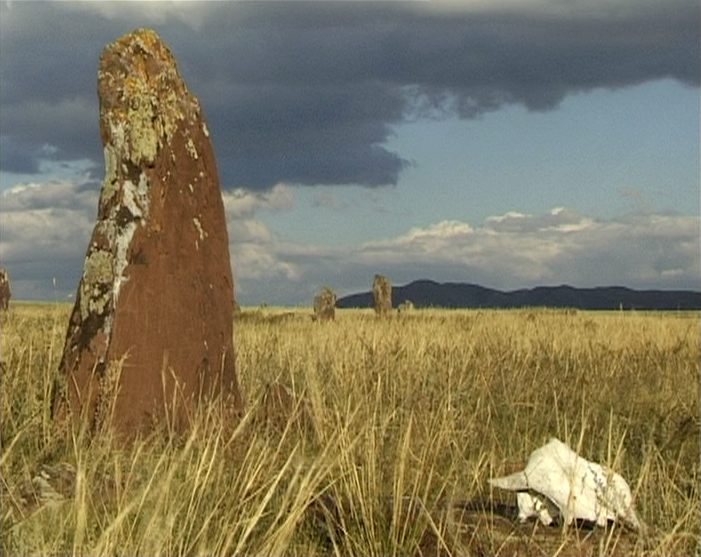
Megalith near village Kazanovka in Republic Khakassia, Russian Federation. Photo by Anatoly Terentiev, 13 September 2000.

Khakassia view. Photo by Philipp Poddubitsky, 14 October 2000.

Megalith near village Safronov in Republic Khakasiya, Russian Federation. Photo by Anatoly Terentiev, 13 September 2000.

Kezenoy Am (Кезеной Ам), 29 July 2009. Photo: Agidel

Petropavlovsk Kamchatsky at night.

Amga
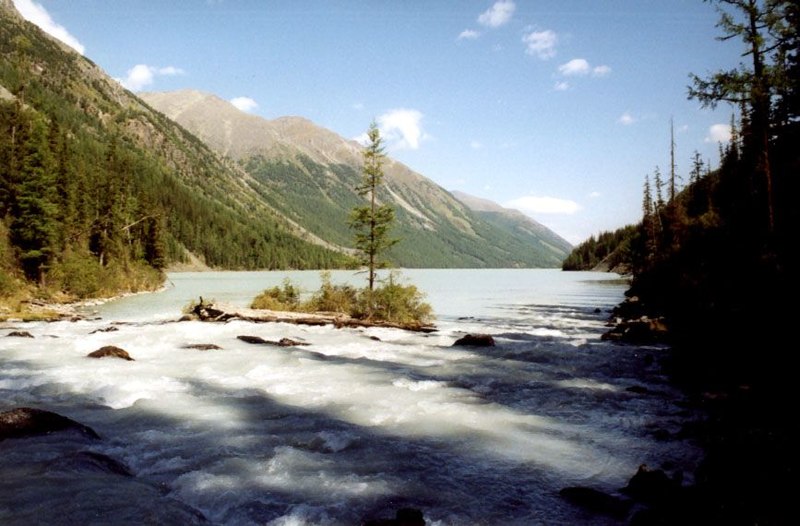
Altai, Lake Kutsherla in Altay Mountains, Russia 2001. Photo: Stefan Kühn.

Taiga Forest near Lake Baikal, Russia, 2008. Photo: Christophe Meneboeuf.

Ignateva cave entry 2009 (Вход в Игнатьевскую пещеру) Photo: Sultan Brukhanov.
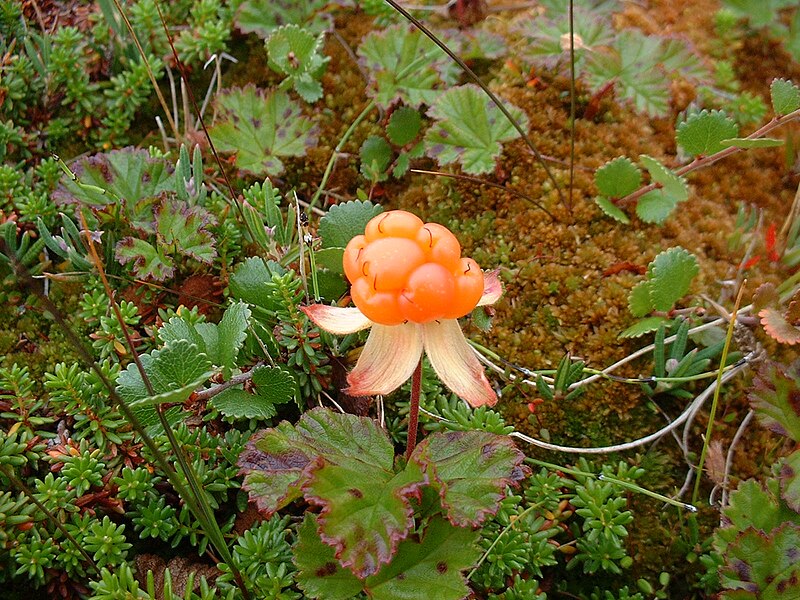
Ripe Cloudberry (Rubus chamaemorus), February 2006 common to the Urals. Photo: Philipum.
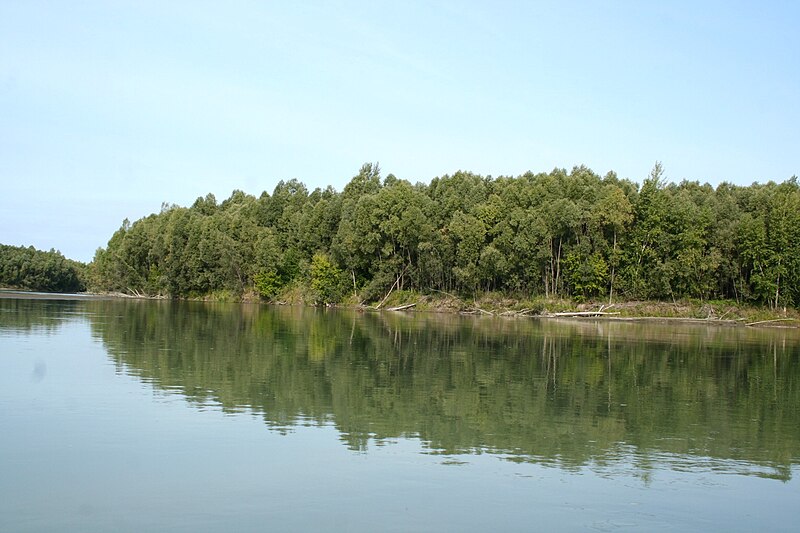
Ob River (Река Обь) Photo: Игоревич

Lake Uvs (Убса) Photo: Jan Sysel.
^^Look how desolate the above picure is! Just earth and water, nothing else. It is stark, vast and a contradiction of inviting and uninviting. On the one hand, I would like to be there and see this place, on the other hand, I wouldn't want to be there forever.

Yakutsk, 2007. Photo: "synchroswimr"/Stacy
*Caleb's Sidenote: Doesn't this picture look like it could have been taken in the 60's, 70's or 80's (it is dated 2007) ? I think Russia is fasinating, but it seems VERY depressing in some parts.

Lone Maiden Formation, Lena River.

Circum-Baikal Railway, southwestern tip of Lake Baikal.

Nagayevo Bay near Magadan, Russia (Бухта Нагаева, вид с Магадана) 2006. Photo: Obersachse
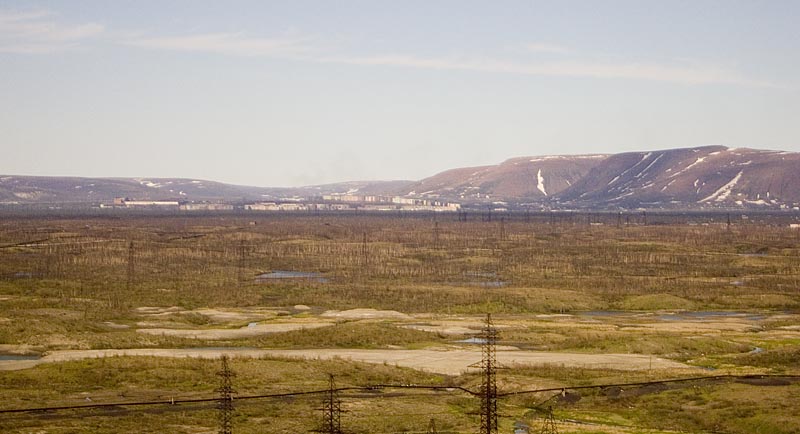
Forest-tundra landscape example (Norilsk, Russia environment) Образец заповедной (2006-06-26) Photo: Grain

The cliffs Brat ("Brother") and Sestra ("Sister") in the environs of Nakhodka, 2006. Photo: adfoto
The topic of Russia is vast. The history, archaeology and geography each could be a blog. Russia is easily the largest country in the world by land area. It is the 9th largest in population behind Nigeria and ahead of Japan. Much of the land is harsh--but it is beautiful. The capital and largest city is Moscow (Москва). Saint Petersburg (Санкт-Петербург) Novosibirsk (Новосибирск), Yekaterinburg (Екатеринбург) and Nizhny Novgorod (Нижний Новгород) round out the top 5 cities in Russia.Within Russia is 1/4th of the worlds fresh water, 100,000 rivers and the worlds largest timber reserves. Also, Russia has the second most total renewable water resources after Brasil.
Russia is a powerhouse in intellectual fields such as mathematics, science and strategy games (like chess). Russians are also a growing power in the music production field (which I am involved in). Some notable people from these fields include Grigori Perelman, Yakov Eliashberg, Nikolai Efimov, Albert Shiryaev and Garry Kasparov.
At different points in history, Russia has been considered a 'super-power'. Now, few would say it is. However, this could (and I think will) change soon. If the West continues its mindless direction, the future is Asia's and Russia is included in this. Russia is rich in oil and natural gas, a sure sign of strength. Rail transportation in Russia is dominated by Russian Railways, a monopoly which employs 950,000 people. The economy continues to improve for Russians.
Russia's physical geography is immense. Within Russia are many mountain ranges, lakes, rivers, deserts and tundra, taiga and almost every type of landscape. The land can be bleak but this makes it interesting. Cities are found all across Russia. From the northern most natural border with the artic to the eastern most natural border with the vast bering sea. Many parts of Russia get as cold as anywhere on the planet. The continental climate of much of Siberia means it also can get hot, sometimes, 99 degrees. I am definatly going to write more on Russia in the future.

Osyotr river (Осётр река)

All Religions Temple. A building and cultural center build by the local artist Ildar Xanov. Photo and description: Maarten

Peterhof, St. Petersburg

Outskirts of Serpeevka village. Cleyabinsk region, Russia. Окрестности деревни Серпеевка. Челябинская область, Россия. Photo: Скампецкий

Megalith near village Kazanovka in Republic Khakassia, Russian Federation. Photo by Anatoly Terentiev, 13 September 2000.

Khakassia view. Photo by Philipp Poddubitsky, 14 October 2000.

Megalith near village Safronov in Republic Khakasiya, Russian Federation. Photo by Anatoly Terentiev, 13 September 2000.

Kezenoy Am (Кезеной Ам), 29 July 2009. Photo: Agidel

Petropavlovsk Kamchatsky at night.

Amga

Altai, Lake Kutsherla in Altay Mountains, Russia 2001. Photo: Stefan Kühn.

Taiga Forest near Lake Baikal, Russia, 2008. Photo: Christophe Meneboeuf.

Ignateva cave entry 2009 (Вход в Игнатьевскую пещеру) Photo: Sultan Brukhanov.

Ripe Cloudberry (Rubus chamaemorus), February 2006 common to the Urals. Photo: Philipum.

Ob River (Река Обь) Photo: Игоревич

Lake Uvs (Убса) Photo: Jan Sysel.
^^Look how desolate the above picure is! Just earth and water, nothing else. It is stark, vast and a contradiction of inviting and uninviting. On the one hand, I would like to be there and see this place, on the other hand, I wouldn't want to be there forever.

Yakutsk, 2007. Photo: "synchroswimr"/Stacy
*Caleb's Sidenote: Doesn't this picture look like it could have been taken in the 60's, 70's or 80's (it is dated 2007) ? I think Russia is fasinating, but it seems VERY depressing in some parts.

Lone Maiden Formation, Lena River.

Circum-Baikal Railway, southwestern tip of Lake Baikal.

Nagayevo Bay near Magadan, Russia (Бухта Нагаева, вид с Магадана) 2006. Photo: Obersachse

Forest-tundra landscape example (Norilsk, Russia environment) Образец заповедной (2006-06-26) Photo: Grain

The cliffs Brat ("Brother") and Sestra ("Sister") in the environs of Nakhodka, 2006. Photo: adfoto
Subscribe to:
Comments (Atom)
